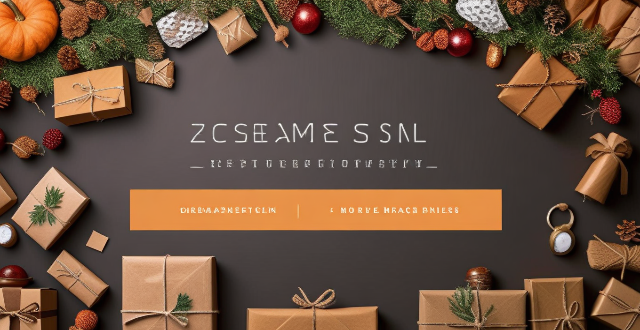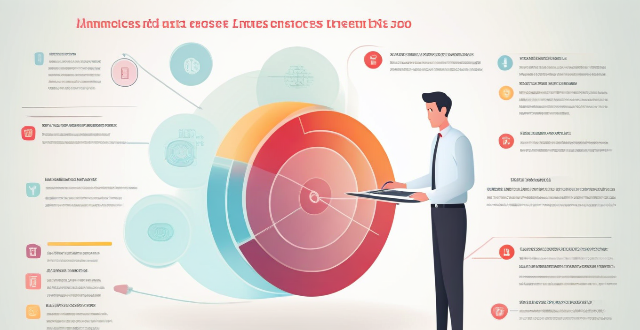Customer Clearance

What are the best strategies for a successful clearance sale ?
Clearance sales are an effective way to liquidate excess inventory and attract customers looking for deals. Here are some strategies to ensure your clearance sale is successful: 1. Advertise in Advance 2. Create Eye-catching Displays 3. Offer Competitive Discounts 4. Optimize Online Presence 5. Provide Excellent Customer Service 6. Follow Up Post-Sale By implementing these strategies, you can maximize the success of your clearance sale while providing value to your customers. Remember to measure key performance indicators such as sales revenue, customer traffic, and return on investment to evaluate the effectiveness of your clearance sale efforts.

How do I track the success of my clearance sale ?
When it comes to tracking the success of your clearance sale, there are several key metrics and strategies you can use. Here's a detailed guide on how to do so effectively: 1. **Sales Revenue**: Measure the total revenue generated from the clearance sale and compare it with past sales data to see if there has been an increase or decrease in revenue. 2. **Customer Engagement**: Track the number of visitors who came specifically for the clearance sale and look at the engagement rate - how long were they on your site? Did they interact with multiple products? 3. **Conversion Rates**: What percentage of visitors made a purchase during the clearance sale? Also consider the cart abandonment rate. If many potential customers added items to their cart but didn't complete the purchase, this indicates areas for improvement. 4. **Inventory Movement**: Keep track of the units sold during the clearance sale and measure the reduction in inventory levels as a result of the clearance sale. This helps in future planning and management of stock. 5. **Profit Margin Analysis**: Calculate the profit margin per item sold during the clearance sale and measure the overall profit margin for the clearance sale period. This includes all costs associated with running the sale. 6. **Return on Investment (ROI)**: Include any additional costs incurred due to the clearance sale, such as marketing expenses or extra staff hours, and calculate the return on investment by comparing the net profits against the costs of running the clearance sale. 7. **Customer Feedback**: Use customer surveys and reviews to gather feedback about the clearance sale and analyze social media sentiment during and after the clearance sale. Positive comments and shares indicate a successful event. 8. **Post-Sale Analysis**: After the sale, analyze which products need replenishment based on their performance during the clearance sale and use the data collected to plan future sales events more effectively. Identify what worked well and what didn't, and make adjustments accordingly. By focusing on these key metrics and strategies, you can effectively track the success of your clearance sale and make informed decisions for future sales events.

How can I maximize profits during a clearance sale ?
Clearance sales are a great opportunity for retailers to clear out old inventory and make room for new products. However, it's important to approach clearance sales strategically in order to maximize profits. Here are some tips on how to do so: 1. Analyze Your Inventory: Before you start your clearance sale, take the time to analyze your inventory. Identify which items have been sitting on the shelves for a long time and which ones are still selling well. This will help you determine which items to include in your clearance sale and which ones to keep at full price. 2. Set Competitive Prices: When setting prices for your clearance items, be sure to research competitors' prices and set yours accordingly. You want to offer customers a deal that they can't find elsewhere, but also ensure that you're not selling your products for less than they're worth. Consider offering tiered discounts, where customers receive larger discounts as they purchase more items. 3. Promote Your Sale: Promoting your clearance sale is key to attracting customers and maximizing profits. Use social media, email marketing, and in-store signage to spread the word about your sale. Consider partnering with local influencers or bloggers to help promote your sale and reach a wider audience. 4. Offer Bundle Deals: Bundle deals are a great way to encourage customers to buy multiple items during your clearance sale. For example, if a customer purchases a dress, offer them a discount on a matching pair of shoes or accessories. This not only helps move more products but also increases the overall value of each transaction. 5. Create Urgency: Creating a sense of urgency can motivate customers to make purchases during your clearance sale. Consider offering limited-time discounts or "flash sales" where certain items are discounted for a short period of time. This can encourage customers to act quickly and make purchases before the sale ends. 6. Optimize Your Store Layout: The layout of your store can have a significant impact on sales during a clearance event. Make sure that clearance items are easily accessible and prominently displayed. Consider creating dedicated sections or aisles for clearance items to make it easy for customers to browse and find what they're looking for. 7. Train Your Staff: Your staff plays a crucial role in the success of your clearance sale. Make sure they are trained on the details of the sale, including pricing and any special promotions. Encourage them to upsell customers by suggesting complementary products or bundle deals. Happy, knowledgeable staff can go a long way in creating a positive shopping experience for customers. By following these tips, you can maximize profits during your clearance sale while providing customers with great deals on products they love.

How do I know if a clearance sale is the right strategy for my business ?
Clearance sales can be an effective strategy for businesses looking to move inventory and boost revenue. However, it's important to consider whether this approach aligns with your overall business goals before implementing it. Here are some factors to consider: - **Objectives and Goals**: What are your objectives and goals for holding a clearance sale? Are you trying to liquidate old stock, increase cash flow, boost customer traffic during slow periods, or enhance brand recognition by offering discounts to a wider audience? Understanding your primary goal will help you determine if a clearance sale is the right strategy. - **Inventory Analysis**: Analyze your current inventory to see if there are products that could benefit from a clearance sale. Identify slow-moving items, seasonal goods, and discontinued or outdated products. - **Customer Behavior**: Consider how your customers might react to a clearance sale. Do your customers typically look for deals and discounts? Will discounting affect how customers view your brand in the long term? Will regular customers feel alienated if they missed out on the sale? - **Market Conditions**: Take into account external market conditions that may influence the success of a clearance sale. Are other businesses in your industry also having sales? This could impact your strategy. During economic downturns, consumers may be more inclined to wait for sales. Timing your sale around holidays or seasonal changes can increase its effectiveness. - **Financial Impact**: Assess the potential financial implications of holding a clearance sale. Calculate the minimum acceptable price to ensure you don't lose money. Determine if the immediate influx of cash from a sale is necessary for operations. Consider how much budget you'll have left for upcoming inventory after the sale. - **Alternative Strategies**: Explore other strategies besides a clearance sale that might achieve similar results. Offer volume discounts instead of across-the-board discounts. Reward repeat customers with exclusive discounts or early access to sales through loyalty programs. Group products together at a discounted price to encourage larger purchases through bundle offers. If, after considering all these factors, you find that a clearance sale aligns well with your business objectives and will not negatively impact your brand or financial health, then it could be the right strategy for you. Always remember to communicate clearly with your customers about the reasons behind the sale and ensure that it complements rather than detracts from your overall business strategy.

How do I ensure that my clearance sale doesn't negatively impact my brand image ?
Clearance sales are a common practice for many businesses, but it's essential to ensure that they don't negatively impact your brand image. Here are some tips on how to do so: 1. Set Clear Objectives: Before launching your clearance sale, set clear objectives for what you want to achieve. This will help you stay focused and avoid making decisions that could harm your brand image. 2. Be Transparent About the Sale: Be transparent about why you're having a clearance sale and what items are included. This will help customers understand the context of the sale and prevent any confusion or misunderstandings. 3. Maintain Quality Standards: Even though you're offering discounted prices, it's important to maintain your usual quality standards. Don't compromise on product quality or customer service just because it's a clearance sale. 4. Use Targeted Marketing: Use targeted marketing strategies to reach your ideal customers during the clearance sale. This will help you avoid attracting bargain hunters who may not be interested in your brand beyond the sale. 5. Offer Limited-Time Discounts: Consider offering limited-time discounts instead of slashing prices across the board. This will create a sense of urgency and encourage customers to make a purchase before the sale ends. 6. Follow Up With Customers: After the clearance sale is over, follow up with customers who made purchases. Thank them for their business and ask for feedback on their experience. By following these tips, you can ensure that your clearance sale doesn't negatively impact your brand image while still achieving your goals.

What are the pros and cons of having a clearance sale ?
Clearance sales can boost sales and clear out old inventory, but may also devalue brand image and lead to lower profit margins. Retailers should consider their goals and target audience before implementing a clearance sale.

When is the best time to have a clearance sale ?
A clearance sale is an excellent opportunity for businesses to clear out old inventory and make room for new products. However, timing is crucial when it comes to having a successful clearance sale. In this article, we will discuss the best time to have a clearance sale and how to make the most of it. Before deciding on the best time to have a clearance sale, there are several factors that you need to consider: inventory levels, seasonality, market trends, and customer buying habits. Some of the best times to have a clearance sale include end of season sales, holiday sales periods such as Black Friday and Boxing Day, slow sales periods, and before launching new products. To make the most of your clearance sale, promote your sale, offer extra discounts, bundle products, limit quantities, and provide excellent customer service.

How can I advertise my clearance sale effectively ?
## Effective Strategies for Promoting a Clearance Sale To maximize the success of your clearance sale, it's essential to employ effective advertising strategies. Here are five key methods to promote your upcoming event: ### **1. Social Media Campaigns** Utilize popular social media platforms like Facebook, Twitter, Instagram, and LinkedIn to reach a broad audience. Create engaging posts or stories that highlight the discounts and promotions available during the sale. Encourage followers to share these posts with their friends and family to increase visibility. ### **2. Email Marketing** Send out newsletters or promotional emails to your subscribers announcing the clearance sale and showcasing the best deals. Make sure to include attractive visuals and clear call-to-action buttons to encourage customers to take action. ### **3. In-Store Signage** If you have a physical store, utilize in-store signage to draw attention to your clearance sale. Place posters, banners, and signs throughout the store to highlight the discounts and promotions available during the event. This will help attract customers who are already shopping at your location. ### **4. Local Advertising** Consider investing in local newspapers, magazines, or radio stations to advertise your clearance sale. This will help you reach potential customers who may not be active on social media or subscribed to your email list. Be sure to provide all the necessary details about the sale, including dates, times, and location. ### **5. Collaborate with Influencers** Partner with influencers in your industry to expand your reach and attract more customers to your clearance sale. Find influencers who align with your brand values and ask them to promote your event on their social media channels or blogs. Offer them exclusive discounts or free products in exchange for their promotion.

What are some creative ways to promote a clearance sale ?
Clearance sales are an excellent opportunity for businesses to clear out old inventory and make room for new products. However, promoting a clearance sale requires creativity and strategy to attract customers and maximize sales. Here are some creative ways to promote a clearance sale: ## 1\. Create Urgency with Limited Time Offers Limited time offers create a sense of urgency that can drive customers to take action. You can promote your clearance sale by setting a deadline for the sale and advertising it prominently on your website, social media channels, and in-store signage. ***Key Takeaways:*** * Set a deadline for the clearance sale * Advertise the deadline on all marketing channels ## 2\. Offer Bonus Deals or Free Gifts Offering bonus deals or free gifts with purchase can be an effective way to attract customers to your clearance sale. For example, you could offer a free gift with any purchase over a certain amount or a buy-one-get-one-free deal on select items. ***Key Takeaways:*** * Offer bonus deals or free gifts with purchase * Promote the offer on all marketing channels ## 3\. Use Social Media to Spread the Word Social media is a powerful tool for promoting your clearance sale. You can use platforms like Facebook, Instagram, and Twitter to share images and videos of your sale items, highlight special deals, and encourage customers to share your posts with their friends and followers. ***Key Takeaways:*** * Share images and videos of sale items on social media * Encourage customers to share your posts with their friends and followers ## 4\. Partner with Influencers Partnering with influencers in your industry can help you reach a wider audience and increase awareness of your clearance sale. You can offer influencers exclusive discounts or free products in exchange for promoting your sale to their followers. ***Key Takeaways:*** * Partner with influencers in your industry * Offer exclusive discounts or free products in exchange for promotion ## 5\. Host a Pop-Up Shop or Event Hosting a pop-up shop or event can create buzz around your clearance sale and attract customers who may not have otherwise known about it. You can invite local bloggers, influencers, and media outlets to cover the event and generate additional exposure for your sale. ***Key Takeaways:*** * Host a pop-up shop or event to create buzz around your clearance sale * Invite local bloggers, influencers, and media outlets to cover the event

How do I set pricing for items in a clearance sale ?
When setting pricing for items in a clearance sale, consider the purpose of the sale, analyze costs, research competitor pricing, consider customer perception, use psychological pricing strategies, be flexible with pricing, and communicate the savings.

What are some common mistakes to avoid when planning a clearance sale ?
When planning a clearance sale, there are several common mistakes to avoid. These include inadequate advertising, poor pricing strategies, disorganized displays, insufficient staffing, and ignoring customer service. To ensure a successful sale, it's important to advertise the sale adequately using multiple channels, offer significant discounts, organize the display effectively, plan sufficient staffing levels, and provide excellent customer service. By avoiding these mistakes, you can maximize your sales and customer satisfaction during a clearance sale.

How do I manage inventory during a clearance sale ?
Managing inventory during a clearance sale requires careful planning and execution. Here are some tips to help you manage your inventory effectively: 1. Analyze your current inventory levels to identify which products need to be sold off and how much stock you have of each item. 2. Set clear objectives for your clearance sale, including how much revenue you want to generate and what percentage of your inventory you want to sell off. 3. Identify slow-moving products that have been sitting in your warehouse for an extended period and offer them at a discounted rate. 4. Determine the discount levels for each product based on its demand and profit margin. 5. Promote your clearance sale through various channels such as social media, email marketing, and in-store signage. 6. Track sales and inventory levels throughout the clearance sale to identify which products are selling well and which ones are not. 7. Restock popular products that sell out quickly during the clearance sale. 8. Don't forget about returns, and make sure you have a clear return policy in place and train your staff to handle returns efficiently.

How do I ensure that my clearance sale doesn't lead to overstocking issues later on ?
Clearance sales are a powerful tool for boosting short-term revenue and managing old inventory. However, they need to be managed carefully to avoid future overstocking issues. This comprehensive guide provides strategies such as planning ahead, limiting promotional periods, segmenting inventory, dynamic pricing, leveraging data analytics, cross-selling and upselling, post-sale analysis, and customer retention strategies. By implementing these tactics, businesses can ensure their clearance sales clear out old inventory efficiently while laying the groundwork for sustainable inventory management moving forward.

What are some tips for creating a sense of urgency during a clearance sale ?
Clearance sales are an excellent opportunity for businesses to clear out old inventory and make room for new products. However, to maximize the effectiveness of a clearance sale, it's essential to create a sense of urgency that encourages customers to act quickly. Here are some tips for creating a sense of urgency during a clearance sale: Highlight Limited Availability - Use Countdown Timers - Showcase Low Stock Levels - Update Inventory Real-Time Offer Special Discounts - Tiered Discounts - Flash Sales - Loyalty Program Bonuses Create Urgency Through Marketing - Urgent Language in Ads - Email Marketing Campaigns - Social Media Countdowns Optimize Your Store Experience - In-Store Signage - Play Upbeat Music - Prominent Display of Sale Items Follow Up After the Sale - Post-Sale Analysis - Feedback Surveys

What kind of discounts should I offer during a clearance sale ?
Offering the right discounts during a clearance sale is crucial for attracting customers and clearing out inventory. Here are some strategies to consider: 1. Percentage-Based Discounts: Start with moderate discounts of around 20-30% on selected items and increase gradually as the sale progresses. 2. Buy One, Get One Free (BOGO) Offers: Select slow-moving items or bundle complementary items together. 3. Tiered Discounts: Encourage customers to spend more by offering tiered discounts based on the amount spent or quantity purchased. 4. Time-Limited Deals: Run short-term promotions like flash sales or countdown deals to create a sense of urgency. 5. Membership or Loyalty Discounts: Offer exclusive deals for members of your loyalty program or reward repeat customers with extra savings. 6. Price Threshold Discounts: Apply discounts only when a certain amount is spent or offer a maximum price guarantee. 7. Gift with Purchase (GWP): Reward loyal customers with free gifts or include promotional items with purchases over a certain amount. 8. Clearance Rack or Section: Designate a specific area or rack for clearance items and use prominent signage and labels to highlight the savings. 9. Online-Exclusive Deals: Offer exclusive online deals to encourage online shopping and reduce the burden on physical store inventory. 10. Combination Discounts: Mix and match different types of discounts, such as a percentage-based discount combined with a GWP offer or allow customers to combine multiple discounts for maximum savings. Remember, the goal of a clearance sale is to move inventory while still maintaining profit margins and brand reputation. Be strategic in your discounting approach and communicate clearly with customers about the deals you're offering.

How can automation be used to improve customer service ?
Automation can significantly enhance customer service by streamlining processes, reducing errors, and providing consistent support. It enables personalized communication through chatbots and email automation, efficient processes via self-service options and backend automation, a consistent experience with standardized responses, cost-effective solutions through scalability, and continuous improvement using feedback loops. As technology progresses, the potential for automation in customer service will continue to expand, leading to more innovative ways to meet customer needs.

How does Fintech improve customer experience in banking ?
Fintech has transformed the banking industry by providing innovative solutions that improve customer experience. It offers personalized services, faster transactions, enhanced security, and innovative features. Fintech companies provide a seamless user interface, personalized financial advice, customized products, faster transactions, instant access to information, streamlined processes, robust security measures, transparent fees, regulatory compliance, mobile payments, peer-to-peer lending, crowdfunding, and exploration of cryptocurrencies and blockchain technology. These advancements have significantly improved customer experience in banking and will continue to shape the future of banking as technology evolves.

How can sports marketing help to build customer loyalty ?
Sports marketing is a powerful tool that can build customer loyalty by leveraging the emotional connection between fans and their favorite teams. Strategies include sponsorships, promotions, giveaways, and social media engagement to create a sense of shared identity and community among customers. Examples include Nike's sponsorship of the Brazilian national football team, Coca-Cola's partnership with the Olympic Games, Budweiser's "Up for Whatever" campaign, McDonald's "McRib" promotion during the World Series, ESPN's social media presence, and Red Bull's extreme sports content on social media channels. By establishing themselves as trusted partners of popular sports teams and events, businesses can increase customer loyalty and brand recognition.

How do I contact customer service for my mobile operator ?
How to Contact Customer Service for Your Mobile Operator

How can I compare different online shopping sites for their customer service ?
In this article, we discuss how to compare different online shopping sites for their customer service. The first step is to research and gather information by reading reviews and testimonials, checking social media presence, and asking for recommendations from friends or family. The second step is to analyze the information by comparing customer service options, evaluating response time, and assessing quality of service. The final step is to make a decision based on weighing pros and cons and trying before you buy. By following these steps, you can choose an online shopping site that offers excellent customer service and meets your needs.

Which shopping apps have a strong focus on customer service and support ?
The provided text discusses the importance of customer service and support in shopping apps. It then goes on to highlight five notable shopping apps—Amazon, Shopify, Etsy, eBay, and Alibaba—that prioritize these aspects. Each app is described in terms of its unique features and services that enhance user experience. For Amazon, it's the live chat and email support, 24/7 availability, and the Mayday button for Fire devices users. Shopify is praised for its multichannel support, extensive knowledge base, and active community forums. Etsy is lauded for its personalized assistance, seller education, and resolution center. eBay's detailed resolution process, security measures, and seller protections are highlighted. Lastly, Alibaba is commended for its Trade Assurance program, legal services, and supplier verification. In conclusion, these shopping apps understand the significance of supporting their users throughout the shopping journey, each offering unique strengths in customer service and support.

What kind of customer feedback has been received so far for the new product ?
The new product has received mostly positive feedback, withThe new product has received mostly positive feedback, with user-friendly interface, speed However, there have been concerns about compatibility issues, software bugs, and pricing. Some customers also mentioned the need for additional features and improvements in customer support services. Overall, the feedback will be used to make necessary improvements and meet customer expectations.

Where can I find the best sample sales ?
The best sample sales can be found at various online retailers, department stores, and outlet stores. Online retailers like Amazon, Walmart, and Best Buy offer daily deals, clearance sections, and open-box discounts. Department stores such as Macy's, Nordstrom, and Kohl's provide one-day sales, Last Act clearance, and beauty trends with sample-sized products. Outlet stores like TJ Maxx, Marshalls, and Ross Dress for Less offer off-price models, discounted samples from name-brand designers, and weekly ads for the latest sample sales.

How often do sample sales occur ?
Sample sales are clearance events where retailers offer discounted prices on overstocked or discontinued items. The frequency of these sales varies by retailer type and inventory management strategy, but here are some general guidelines: - Department stores typically have sample sales once or twice a year during end-of-season clearance periods. - Specialty retailers may have sample sales less frequently, coinciding with major seasonal changes like spring and fall. - Outlet stores can have more frequent sample sales, occurring every few months. - Online retailers like Amazon and Zappos have regular sales throughout the year, with sporadic sample sales for overstocked items. - Flash sale websites specialize in limited-time sales on designer brands, often featuring daily or weekly sample sales. - Auction sites like eBay can have sample sales anytime, driven by individual sellers looking to liquidate their inventory. Overall, sample sales often coincide with seasonal changes, major holidays, and end-of-fiscal-year clearance periods. It's beneficial to stay informed about your favorite retailers' sale schedules and sign up for email newsletters to receive notifications about upcoming sample sales.

How often do you run limited-time promotions ?
Running limited-time promotions can be an effective strategy for businesses to increase sales, acquire new customers, and manage inventory. The frequency of these promotions depends on various factors such as business goals, target audience, and product/service offerings. Limited-time promotions offer benefits such as increased sales through urgency and discounts, customer acquisition by attracting new customers and rewarding loyalty, and inventory management by clearing excess inventory and promoting seasonal products. Best practices for limited-time promotions include planning and timing, marketing and promotion, and tracking and analysis. By following these practices, businesses can maximize the benefits of limited-time promotions and achieve their desired outcomes.

How does network expansion impact customer experience ?
Network expansion improves customer experience by increasing coverage, reducing disconnections, boosting speed and reliability, and enhancing accessibility to services and devices.

How can companies improve their products based on customer reviews ?
Companies can improve their products by listening to customer reviews, addressing negative feedback, encouraging constructive criticism, implementing continuous improvement, and leveraging positive reviews. This involves analyzing feedback using NLP tools, categorizing issues, prioritizing actions, investigating complaints, implementing fixes, communicating changes, creating a supportive environment for honest feedback, establishing a feedback loop, iterating rapidly, monitoring progress, highlighting strengths, celebrating successes, and maintaining quality. By doing so, companies can enhance their offerings and stay relevant in the market.

How do retailers benefit from offering a buy one get one free promotion ?
Retailers can benefit from offering a "buy one get one free" (BOGO) promotion by attracting new customers, increasing sales, managing inventory more effectively, enhancing brand perception, and collecting valuable customer data. This marketing strategy not only boosts short-term revenue but also helps build long-term customer loyalty and brand equity.

How do I identify the best online shopping sites for budget buys ?
How to identify the best online shopping sites for budget buys? 1. Research and compare prices using price comparison websites like CamelCamelCamel, Google Shopping, and PriceGrabber. 2. Check for coupons and promo codes on coupon websites such as RetailMeNot, Honey, and Rakuten before making a purchase. 3. Look for sales and discounts offered by online shopping sites during seasonal events, clearance events, and flash sales. 4. Read reviews and ratings from other customers on review platforms like Amazon, Trustpilot, and Sitejabber to determine the reliability of an online shopping site. 5. Consider shipping costs and return policies when comparing online shopping sites to ensure affordability and convenience in case of returns or exchanges.

**Does Apple provide customer support for solving iCloud sync issues ?
Apple offers various support channels for solving iCloud sync issues, including a website with troubleshooting guides, online chat and phone support, in-person assistance at Apple Stores or authorized providers, email support, and community forums. These options ensure that users can find help suited to their preferences and needs.